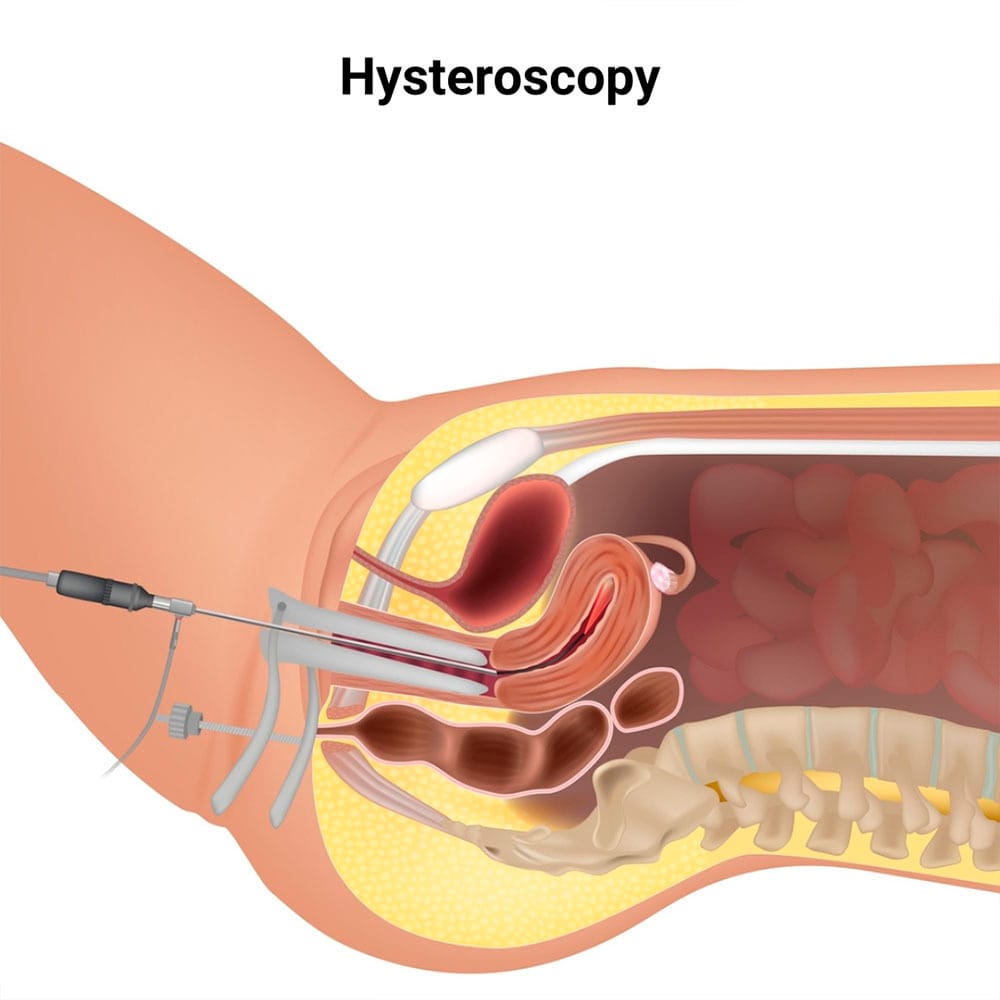What Is Hysteroscopy?
 Hysteroscopy is a procedure that helps your doctor examine the inside of your uterus and cervix. A hysteroscopy polypectomy helps your doctor find polyps and uterine fibroids if you have irregular, heavy or prolonged periods. The hysteroscope is inserted through your vagina and cervix to check your uterus for abnormalities like abnormal uterine bleeding.
Hysteroscopy is a procedure that helps your doctor examine the inside of your uterus and cervix. A hysteroscopy polypectomy helps your doctor find polyps and uterine fibroids if you have irregular, heavy or prolonged periods. The hysteroscope is inserted through your vagina and cervix to check your uterus for abnormalities like abnormal uterine bleeding.
When the treatment is needed, your doctor passes tiny surgical tools through the hysteroscope to remove growths or repair scar tissue, depending on your condition. A hysteroscopy can also be used to confirm the results of other tests, such as an ultrasound or hysterosalpingography. A hysteroscopy biopsy is performed to take a small tissue sample to check for cancer.
Dr. Felix Cohen, founder and director of Cohen Medical Practice (CMP) in Midtown NYC helps you make the best decision for your gynecological health and provides options that best suit your needs and fertility goals.
Who Is a Candidate for Hysterectomy?
Your surgeon carefully reviews your medical history and current health to decide if a hysteroscopy is the right option for you. Hysteroscopy has many benefits, but it may not be suitable for everyone. You need to avoid having a hysteroscopy if you’re pregnant or have a pelvic infection.
Several medical issues that might make a hysterectomy necessary for you include:
- Uterine fibroids, which are non-cancerous growths in your uterus
- Chronic pelvic pain that doesn’t have an identifiable cause
- Adenomyosis, when the inner lining of your uterus grows into its muscular wall
- Endometriosis, that occurs when tissue similar to the lining of your uterus grows outside of your uterus and causes extraordinary bleeding
A laparoscopy hysteroscopy involves removing your uterus to effectively treat conditions like gynecological cancers of your ovaries, fallopian tubes or cervix. This means pregnancy after a hysteroscopy might be difficult, and you won’t have menstrual periods anymore. If your uterus has slipped from its normal position into your vaginal canal due to weakened muscles, a hysterectomy could help relieve the discomfort and other symptoms caused by this condition.
What Happens Before, During and After the Hysterectomy Procedure?
Your doctor explains necessary preparations like avoiding eating and drinking before the procedure. You most likely are asked to stop taking certain medications, like blood thinners or anti-inflammatory drugs to reduce the risk of complications. The procedure is scheduled for a time when you’re not menstruating, as this provides the clearest view of your uterus.
Once you’re completely prepared, your doctor gives you light anesthesia to keep you comfortable. Surgical steps include:
- Inserting a speculum into your vagina to keep it open
- Dilating your uterus to allow the hysteroscope, a thin, lighted tube, to pass through
- Inserting the hysteroscope through your vagina and into your uterus
- Filling your uterus with carbon dioxide gas or a liquid solution, such as saline
- Displaying magnified images of your uterus on a monitor and examining these images for any signs of abnormal cells
- Performing the procedure; if you’re having an operative hysteroscopy, your doctor may insert small surgical instruments through the hysteroscope to remove growths or repair tissue
Whether you’re having diagnostic hysteroscopy or operative treatment, the procedure only lasts 10 to 30 minutes. Once your examination or treatment is complete, your doctor removes the hysteroscope and takes you to the recovery room. Your doctor then gives you detailed post-procedure care instructions, as well as any necessary follow-up appointments.
What Are the Potential Risks and Complications of Hysteroscopy?
Dr. Cohen takes preventive measures such as maintaining a sterile environment during the procedure and may prescribe antibiotics to reduce your risk of infection. If you had an operative hysteroscopy ablation you may need a few additional days of rest.
He provides effective methods to minimize complications that are normal and typically subside within a few days and may include:
- Slight bloating after a hysteroscopy
- Minimal spotting after a hysteroscopy
- Mild cramping or light spotting after a hysteroscopy
- Resting for a few days and resuming normal activities within a day or two
- Fully recovering after four to six weeks with minimal risks
A diagnostic hysteroscopy, particularly hysteroscopy biopsy, can be a life-saving procedure that’s worth the mild discomfort. It’s vital that your CMP medical team finds the causes of your symptoms to be able to devise the appropriate treatment.
Depending on the results following a diagnostic laparoscopy hysteroscopy, you may then rely on your doctor for a follow-up gynecological procedure which may include:
When you’re exploring options for gynecological services, from an annual exam to pregnancy and menopause care, count on CMP physicians and clinicians to prioritize your reproductive health. Contact Cohen Medical Practice (CMP) in Midtown NYC for more information about this minimally invasive laparoscopy hysteroscopy procedure or other gynecological services.

